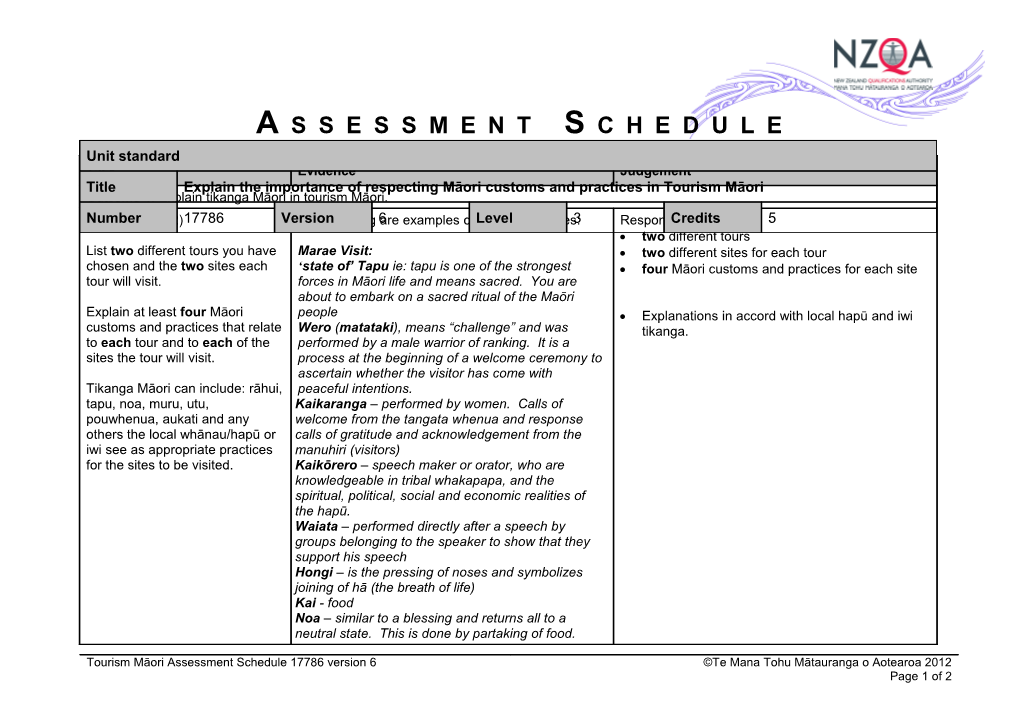Assessment Schedule
Unit standardTitle / Explain the importance of respecting Māori customs and practices in Tourism Māori
Number / 17786 / Version / 6 / Level / 3 / Credits / 5
Task / Evidence / Judgement /
Outcome 1: Explain tikanga Māori in tourism Māori.
Task 1 (1.1, 1.2)
List two different tours you have chosen and the two sites each tour will visit.
Explain at least four Māori customs and practices that relate to each tour and to each of the sites the tour will visit.
Tikanga Māori can include: rāhui, tapu, noa, muru, utu, pouwhenua, aukati and any others the local whānau/hapū or iwi see as appropriate practices for the sites to be visited. / The following are examples of tauira responses:
Marae Visit:
‘state of’ Tapu ie: tapu is one of the strongest forces in Māori life and means sacred. You are about to embark on a sacred ritual of the Maōri people
Wero (matataki), means “challenge” and was performed by a male warrior of ranking. It is a process at the beginning of a welcome ceremony to ascertain whether the visitor has come with peaceful intentions.
Kaikaranga – performed by women. Calls of welcome from the tangata whenua and response calls of gratitude and acknowledgement from the manuhiri (visitors)
Kaikōrero – speech maker or orator, who are knowledgeable in tribal whakapapa, and the spiritual, political, social and economic realities of the hapū.
Waiata – performed directly after a speech by groups belonging to the speaker to show that they support his speech
Hongi – is the pressing of noses and symbolizes joining of hā (the breath of life)
Kai - food
Noa – similar to a blessing and returns all to a neutral state. This is done by partaking of food. / Responses include:
· two different tours
· two different sites for each tour
· four Māori customs and practices for each site
· Explanations in accord with local hapū and iwi tikanga.
Visit to wāhi tapu:
Local iwi authorities informed and consent given
Local kaumātua and kuia to accompany the group.
Historical kōrero to be given prior to entering site
Ngā ture (rules) explained
Karakia performed before entering wāhi tapu.
Karanga performed by kuia on entering the site to acknowledge ngā tīpuna.
Enter site.
Completion: Karakia performed and waiata sung
Noa process: Return to venue for refreshments to neutralise the process of tapu.
Tourism Māori Assessment Schedule 17786 version 6 / Page 2 of 2
©Te Mana Tohu Mātauranga o Aotearoa 2012
